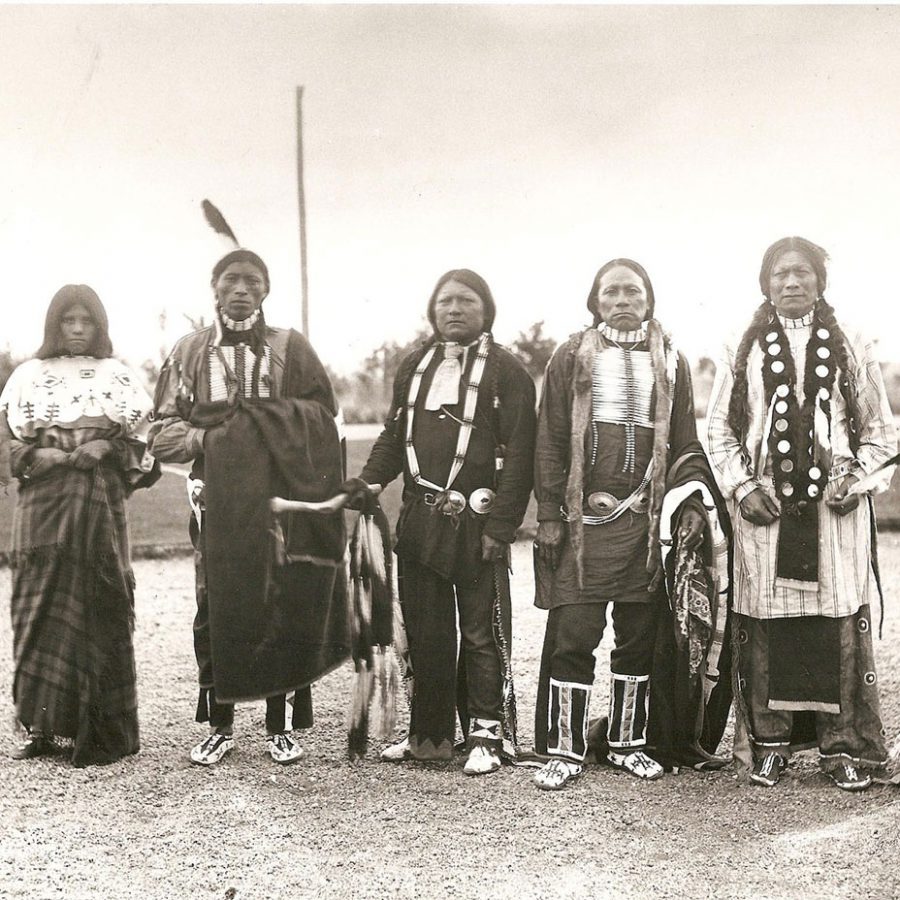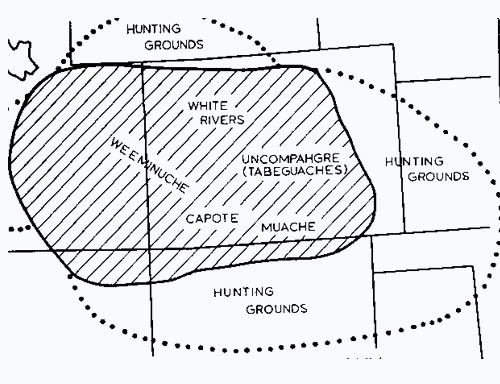
Rooted in Resilience: The Ute Tribe’s Evolving Land Management Legacy
FORT DUCHESNE, UTAH – In the rugged heart of the American West, where the Uintah Mountains scrape the sky and the Uintah Basin stretches in a vast, sun-drenched expanse, lies a story of profound connection, resilience, and modern-day stewardship. This is the ancestral land of the Ute people, specifically the Ute Indian Tribe of the Uintah and Ouray Reservation, and their approach to land management is a complex tapestry woven from ancient wisdom, hard-won sovereignty, and the pragmatic demands of the 21st century.
For millennia, the Ute have been the original inhabitants of this land, their lives inextricably linked to its rhythms, its resources, and its spiritual essence. They were nomadic hunter-gatherers, their movements dictated by the seasons and the availability of game and plants. Their understanding of the ecosystem was not merely scientific; it was holistic, spiritual, and deeply ingrained in their cultural identity.

"Our land is not just dirt and trees; it is our mother, our provider, our history," explains tribal elder Sarah Manygoats, her voice raspy with years of stories told under the vast Utah sky. "Every decision we make about it carries the weight of our ancestors and the hopes of our children. We are just temporary guardians."
This philosophy, forged over countless generations, stands in stark contrast to the historical narrative of colonization, forced relocation, and the imposition of Western land-use paradigms. The Ute Indian Tribe, like many indigenous nations, faced immense pressure to abandon their traditions, assimilate, and surrender their territorial claims. The creation of the Uintah and Ouray Reservation in the mid-19th century drastically reduced their ancestral lands, yet it also became the crucible where their modern land management strategies would be forged.
Today, the Ute Indian Tribe is a sovereign nation managing approximately 4.5 million acres of trust land within the reservation boundaries, making it the second-largest Indian reservation in the United States by land area. This vast territory encompasses diverse ecosystems, from high mountain forests and alpine meadows to desert badlands and fertile river valleys. It is rich in natural resources, including oil, natural gas, timber, and water – resources that have historically been a source of both economic opportunity and intense conflict.
Balancing Tradition and Modernity: The Ute Way
The core challenge for the Ute Tribe’s Natural Resources Department and Tribal Council is to balance economic development with environmental sustainability and cultural preservation. This isn’t an either/or proposition; it’s a constant, dynamic negotiation.
"We have to operate in the modern world," states Robert Yazzie, director of the Tribe’s Energy & Minerals Department. "Our people need jobs, our government needs revenue to fund essential services like healthcare, education, and public safety. So, we develop our resources. But we do it our way, with our people leading the charge, and with a commitment to mitigating impacts and restoring the land."
The Ute Tribe is a significant player in the energy sector, particularly in oil and natural gas extraction. Unlike external companies, however, the Tribe’s approach is guided by a long-term vision that prioritizes tribal benefit and environmental responsibility. Profits generated from resource development are reinvested into tribal programs, infrastructure, and diversification efforts. They are also increasingly asserting control over the regulatory processes, working to ensure that development adheres to stricter environmental standards than those often applied by external agencies.
"We’ve learned hard lessons from the past, when outside interests came in, extracted what they wanted, and left the mess for us," says Yazzie. "Now, we have our own environmental review processes, our own engineers, our own land use planners. We hold ourselves accountable because this is our home."

Guardians of Water: A Precious Resource
Perhaps no resource is more vital to the Ute people, and more contentious in the arid West, than water. The Ute Indian Tribe holds senior water rights in the Uintah Basin, rights that predate many non-Indian claims and are critical for the Tribe’s agricultural economy, cultural practices, and the health of the ecosystem.
The Tribe has been at the forefront of advocating for and protecting these water rights, engaging in complex legal battles and negotiations for decades. Their water management strategy focuses on efficient use for irrigation, ensuring sufficient flows for instream ecological health, and planning for future needs in the face of climate change and increased drought.
"Water is life," asserts Brenda Chee, a Ute hydrologist working for the Tribe. "It’s not just for our crops or our homes; it’s for the fish, the deer, the plants that our people have always relied on. When we talk about water, we’re talking about the health of the entire ecosystem, and our very survival as a people."
The Tribe has invested in modern irrigation technologies to conserve water and has embarked on watershed restoration projects, working to improve riparian habitats and water quality throughout their territory. These efforts often blend Western scientific methods with Traditional Ecological Knowledge (TEK), recognizing that generations of observation have yielded invaluable insights into the land’s hydrology and biodiversity.
Traditional Ecological Knowledge: A Living Guide
TEK is not a static set of rules; it is a dynamic, evolving body of knowledge passed down through generations, rooted in direct observation and spiritual connection to the land. For the Ute, TEK informs decisions about sustainable harvesting of medicinal plants, understanding wildlife migration patterns, and even traditional fire management practices that promote forest health and reduce the risk of catastrophic wildfires.
"Our elders taught us to read the land, to listen to what it tells us," explains Sarah Manygoats. "They taught us which plants heal, where the animals will be, how the weather patterns change. This knowledge is just as important as any scientific report."
The Tribe actively promotes the transfer of TEK to younger generations through cultural programs, language immersion, and hands-on learning experiences on the land. This ensures that the deep understanding of their ancestral territory remains a living, breathing guide for future land managers.
Challenges on the Horizon
Despite their significant achievements, the Ute Indian Tribe faces formidable challenges. Climate change poses an existential threat, with increasing temperatures, prolonged droughts, and more intense wildfires directly impacting their land and resources. The Tribe is actively engaged in climate adaptation planning, exploring strategies like drought-resistant agriculture and resilient infrastructure.
External pressures also persist. Demands for access to tribal resources, disputes over jurisdiction, and the lingering effects of historical injustices continue to test the Tribe’s resolve. Funding for essential environmental programs often falls short, requiring the Tribe to leverage its own resources and seek innovative partnerships.
Furthermore, managing such a large and diverse land base requires constant internal negotiation. The Tribe’s leadership must balance the varied interests of different tribal members and departments, ensuring that decisions reflect the collective well-being and long-term sustainability of the Ute Nation.
A Model for the Future
The Ute Indian Tribe’s journey offers invaluable lessons for land management globally. Their approach demonstrates that economic prosperity and environmental stewardship are not mutually exclusive, and that indigenous knowledge systems hold profound insights for sustainable living.
By asserting their sovereignty, investing in their own capacity, and grounding their decisions in both ancient wisdom and modern science, the Ute people are forging a path that honors their past while securing a vibrant future. Their land management is a testament to their enduring resilience, a powerful declaration that the original guardians of the Earth are still here, still tending to the land, and still leading the way towards a more sustainable and equitable world.
As the sun sets over the Uintah Basin, casting long shadows across the land the Ute have called home for millennia, the work of stewardship continues. It is a daily commitment, a sacred trust, and a powerful symbol of a nation determined to thrive on its own terms, rooted deeply in the land that defines them.


